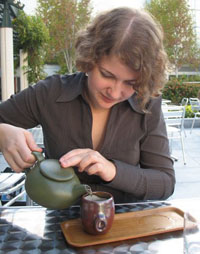
When I was teaching in Japan, one of the types of lessons our more advanced students had was to read articles in English and then discuss them. Frequently, these articles - generally from English-language newspapers in Japan - brought up interesting cultural differences between Japan and the west that made for great discussion topics.
The article on yuzu was not one of these articles. See, though not very well known in the US and Europe, yuzu are pretty common in Japan. So to these students, it was kind of like if an advanced Spanish class in America had you read an article about how "Apples are a very popular fruit. They come in many colors, from red to green to yellow!" Every time one of us taught this lesson, the student was like, "I'm paying how much to read this?" (also worth noting: advanced students take lots of lessons, so we often went through this several times a day)
But I never actually tried yuzu. If there's any incentive not to experiment with food, it's Japanese produce prices. The 100yen candy at the convenience store was cultural immersion enough for me, thanks.
So the funny thing is, this tea tasted exactly like how I imagined yuzu would taste, based entirely on that crappy article and my students' descriptions. And since according to most of my students yuzu do not make good eating, this is not a positive thing.
Overall: 2.5 stars. Bitter and unremarkable, and if you can buy Lupicia you can probably find a market selling yuzu, if you're really curious how it tastes.







